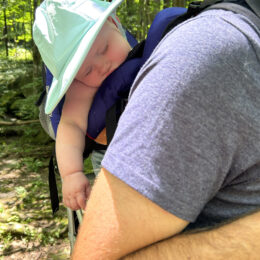The average Hoosier may not have heard of the person showcased in this month’s feature story. Ernie Pyle, whose popularity peaked during the late 30s and early 40s, is not regularly covered in high school history. But during my time at Indiana University’s journalism school, I became familiar with Pyle’s career.
While I was at IU, I was fortunate to be admitted into the “Footsteps of Ernie Pyle” class. Led by Professor Owen Johnson — a Pyle historian and super fan — we studied Pyle’s life and writings all semester and then traveled to London, Normandy, and Paris during spring break. I had never been out of the country before that trip, and it was astounding to experience different cultures and soak up the history of England and France.
The moment that stuck with me most was visiting Ohama Beach in Normandy, the site of the D-Day invasion. As our class stood on the cliffs overlooking the English Channel, our tour guide explained the struggle of the U.S. troops. As they exited the boats and moved through the cold water, dodging underwater obstacles on the way to the beach, they faced enemy soldiers shooting at them from the top of the cliffs. If they were lucky enough to survive the shooting and the land mines buried in the sand, they had to scale the cliffs, knowing that more soldiers were waiting for them at the top. I thought about how terrifying it must have been for these men, many of whom were younger than I was at the time, and how their bravery turned the tide of the war.
Pyle wrote three columns about D-Day. He was in awe of the campaign’s success but also horrified by the loss of life. Pyle’s writings are the true spirit of journalism. His job was to report to his readers what he saw across the ocean, but his personal touch and keen insight made his columns impactful. For a class of aspiring journalists, Pyle’s columns were full of lessons we needed to learn.




